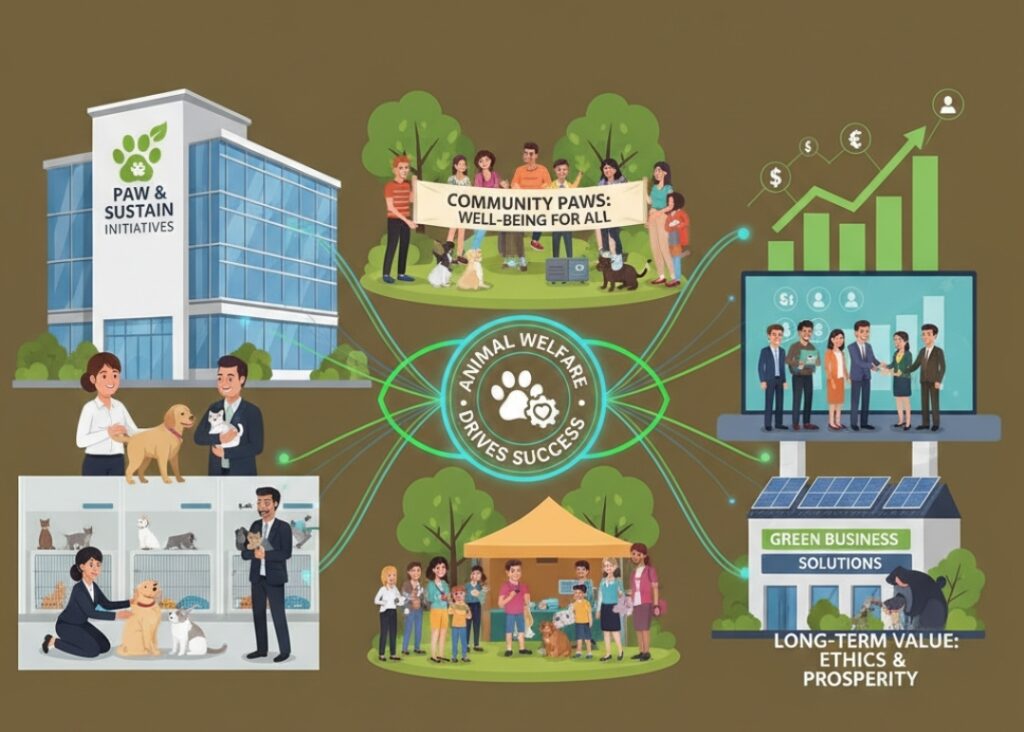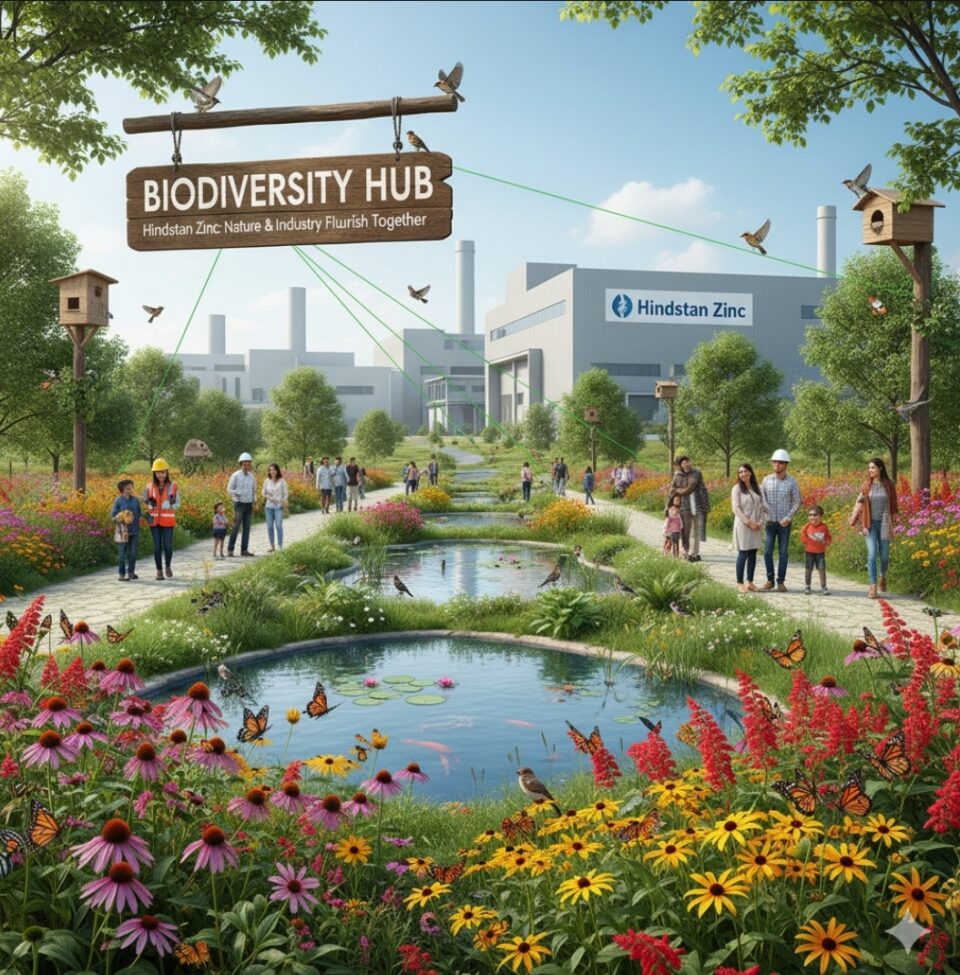Beyond Compliance: How Animal Welfare Programs Reshape Stakeholder Expectations in Modern Business
When CEO Arun Misra of Hindustan Zinc announced the company’s ₹5 crore investment in the Baghdarra Crocodile Conservation Reserve, something profound was happening. This wasn’t just another CSR checkbox initiative. This was a signal that animal welfare programs have evolved from a peripheral concern to a core business imperative that’s reshaping how stakeholders evaluate corporate responsibility.
The conversation around stakeholder expectations has fundamentally changed. Today’s consumers, employees, and investors aren’t just asking about profit margins anymore. They’re scrutinizing how businesses treat their most vulnerable stakeholders—including animals that have no voice in boardroom decisions.
The Stakeholder Revolution: Why Animal Welfare Matters Now
The Traditional CSR Model is Breaking Down
For decades, corporate social responsibility followed a predictable playbook. Companies focused on education, health, and community development while treating animal welfare as an afterthought. The numbers tell the story: animal welfare receives just 0.6% of total CSR spending in India, despite growing stakeholder pressure for ethical business practices.
This disparity reveals a critical disconnect. While companies pour resources into traditional CSR areas, they’re missing a crucial element that increasingly defines their social license to operate.
Stakeholder Expectations Are Evolving Beyond Human-Centric Models
The shift represents more than changing preferences. It reflects a deeper understanding of interconnected systems where animal welfare, environmental sustainability, and human well-being intersect. Hindustan Zinc’s intervention spanning over 8.7 lakh animals through welfare health camps demonstrates this systemic thinking in action.
Modern stakeholders—particularly younger consumers and socially conscious investors—evaluate companies through a “One Health” lens. This approach recognizes that human health connects directly to animal health and environmental sustainability. Companies ignoring this interconnection risk losing relevance with their most important stakeholders.
The Business Case: How Animal Welfare Drives Stakeholder Value
Employee Engagement and Organizational Purpose
Research consistently shows that employees seek meaningful work aligned with their values. Animal welfare initiatives create powerful engagement opportunities that traditional CSR programs often miss. When employees participate in conservation projects like Hindustan Zinc’s Peacock Conservation Park or endangered species nurseries, they connect with their company’s broader purpose.
This connection translates into measurable business outcomes. Companies with highly engaged employees achieve 22% greater profitability than their competitors. Animal welfare programs tap into employees’ intrinsic motivation to protect vulnerable beings, creating deeper engagement than conventional corporate initiatives.
Customer Trust and Brand Differentiation
Consumer expectations have shifted dramatically. Today’s customers research company practices before making purchasing decisions. They’re willing to pay premiums for products from companies demonstrating genuine care for animal welfare. This trend extends beyond direct animal product companies to affect all industries.
McDonalds China and Yum Brands experienced significant sales declines following the 2014 China meat scandal, demonstrating how animal welfare failures impact customer trust across entire supply chains. Conversely, companies proactively addressing animal welfare build stronger customer relationships and brand loyalty.
Investor Confidence and Risk Mitigation
Environmental, Social, and Governance (ESG) investing has mainstreamed animal welfare considerations. Institutional investors increasingly evaluate companies on their approach to animal care, recognizing it as both a reputational risk and growth opportunity.
Poor animal welfare standards create multiple business risks: regulatory compliance issues, supply chain disruptions, reputational damage, and product quality problems. The OIE estimates that animal diseases cause at least 20% of global livestock production losses, highlighting the financial impact of inadequate animal care.
Implementation Strategies: Building Stakeholder-Centered Animal Welfare Programs
Adopt the One Health Approach
Leading companies integrate animal welfare into broader sustainability strategies using the One Health framework. This approach recognizes the interconnection between human, animal, and environmental health, creating comprehensive programs that address multiple stakeholder concerns simultaneously.
Hindustan Zinc‘s partnership with The Animal Care Organization (TACO) exemplifies this integrated approach. By combining animal rescue, treatment, and “One Health” care principles, they address community needs while supporting biodiversity conservation.
Create Multi-Stakeholder Engagement Platforms
Effective animal welfare programs require collaboration across diverse stakeholder groups. Companies should establish platforms bringing together employees, customers, suppliers, local communities, and animal welfare experts to develop comprehensive approaches.
This collaborative model helps companies understand varied stakeholder perspectives while building shared commitment to animal welfare goals. Regular stakeholder consultations ensure programs remain relevant and impactful.
Measure and Communicate Impact Transparently
Stakeholders demand accountability for animal welfare investments. Companies must develop robust measurement frameworks tracking both quantitative outcomes (animals helped, habitats restored) and qualitative impacts (community engagement, employee satisfaction).
Transparent communication builds stakeholder trust and demonstrates genuine commitment. Regular reporting on progress, challenges, and learnings helps stakeholders understand the company’s dedication to continuous improvement in animal welfare practices.
Integrate Animal Welfare into Core Business Operations
The most impactful programs embed animal welfare considerations into fundamental business processes rather than treating them as separate initiatives. This integration demonstrates authentic commitment while creating sustainable change.
Companies should evaluate their supply chains, operational practices, and product development processes through an animal welfare lens. This comprehensive approach addresses stakeholder concerns about corporate authenticity while creating systemic improvements.
The Future of Stakeholder Capitalism Through Animal Welfare
Shifting from Compliance to Innovation
Progressive companies recognize that animal welfare represents an innovation opportunity rather than just a compliance requirement. By developing creative approaches to animal care, companies can differentiate themselves while meeting evolving stakeholder expectations.
Hindustan Zinc’s creation of butterfly gardens, bird nesting stations, and water ponds across operational sites demonstrates how companies can transform industrial landscapes into biodiversity hubs. These innovations show stakeholders that business success and animal welfare can advance together.
Building Stakeholder Trust Through Authentic Action
Authenticity has become the currency of stakeholder relationships. Empty commitments or superficial programs damage credibility more than taking no action at all. Stakeholders can distinguish between genuine commitment and corporate greenwashing with increasing sophistication.
Companies building lasting stakeholder trust invest in long-term animal welfare programs that create measurable change. They partner with credible organizations, involve multiple stakeholders in program design, and maintain transparent communication about both successes and challenges.

Creating Competitive Advantage Through Stakeholder Alignment
Animal welfare programs that align with stakeholder values create sustainable competitive advantages. These initiatives attract top talent, build customer loyalty, secure investor confidence, and strengthen community relationships simultaneously.
The companies leading this transformation recognize that stakeholder capitalism requires genuine care for all stakeholders—including those without economic power or political voice. By protecting animals and their habitats, these companies demonstrate values that resonate with modern stakeholders across all categories.
Key Takeaways for CX Leaders
Animal welfare programs represent a powerful opportunity to strengthen stakeholder relationships while creating meaningful social impact. Companies that embrace this opportunity will build stronger, more resilient businesses aligned with evolving stakeholder expectations.
The path forward requires authentic commitment, collaborative approach, and transparent communication. By integrating animal welfare into core business strategies, companies can meet stakeholder expectations while contributing to a more sustainable and compassionate future.
Success in modern stakeholder capitalism demands recognition that all stakeholders—human and animal alike—deserve consideration in business decisions. The companies that embrace this inclusive approach will thrive in an increasingly conscious marketplace.

